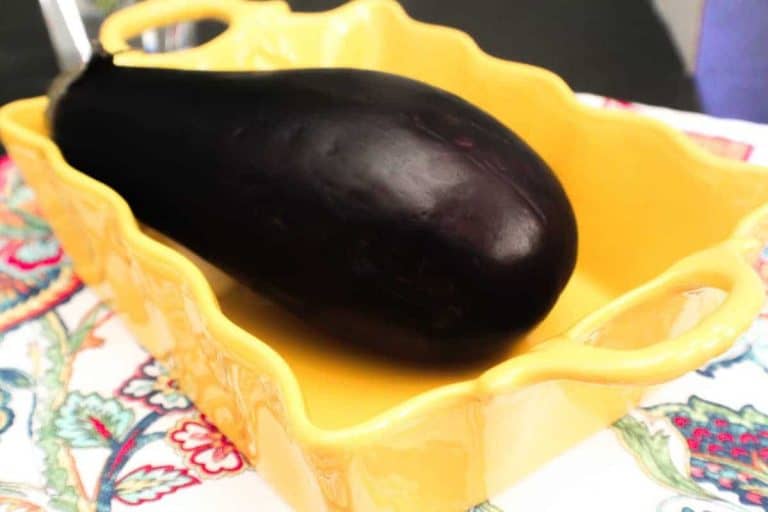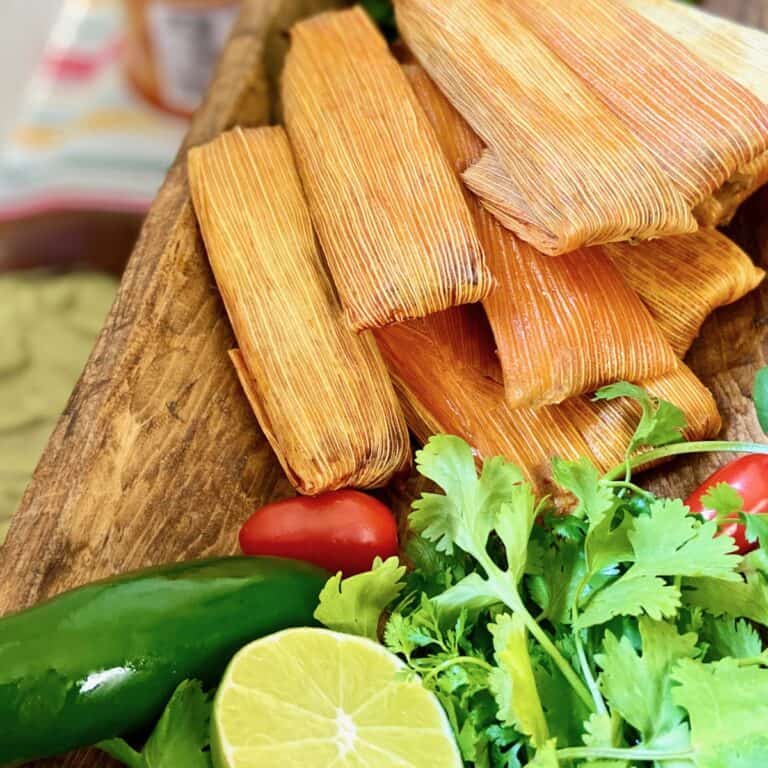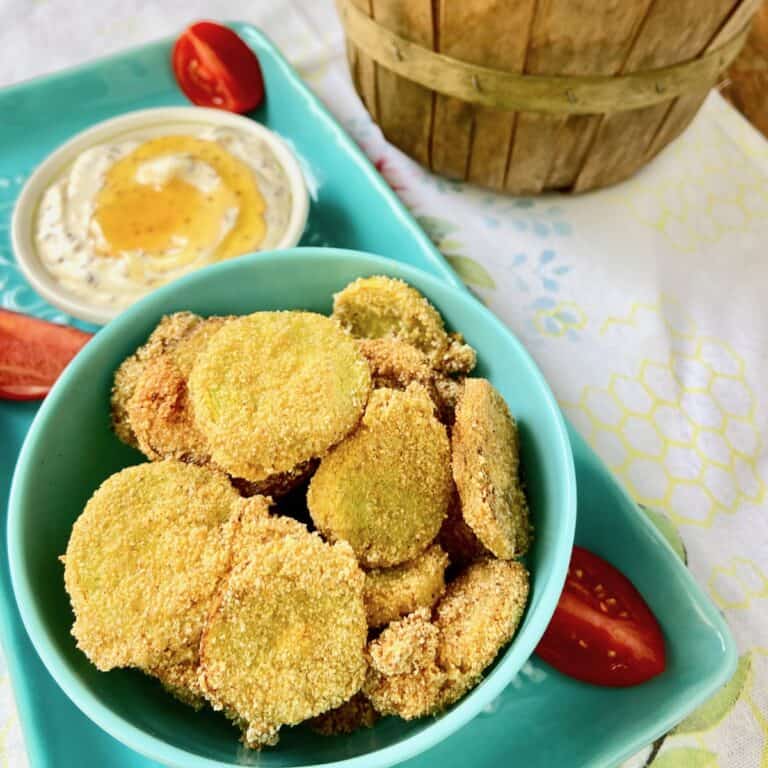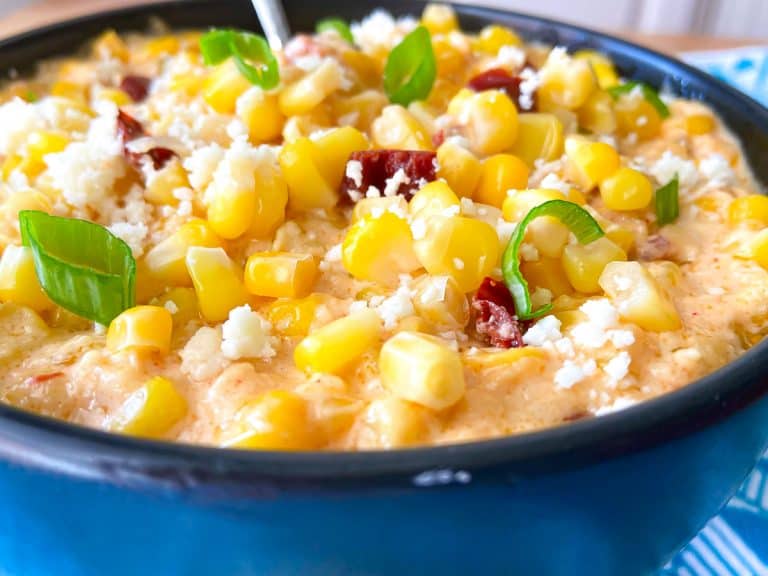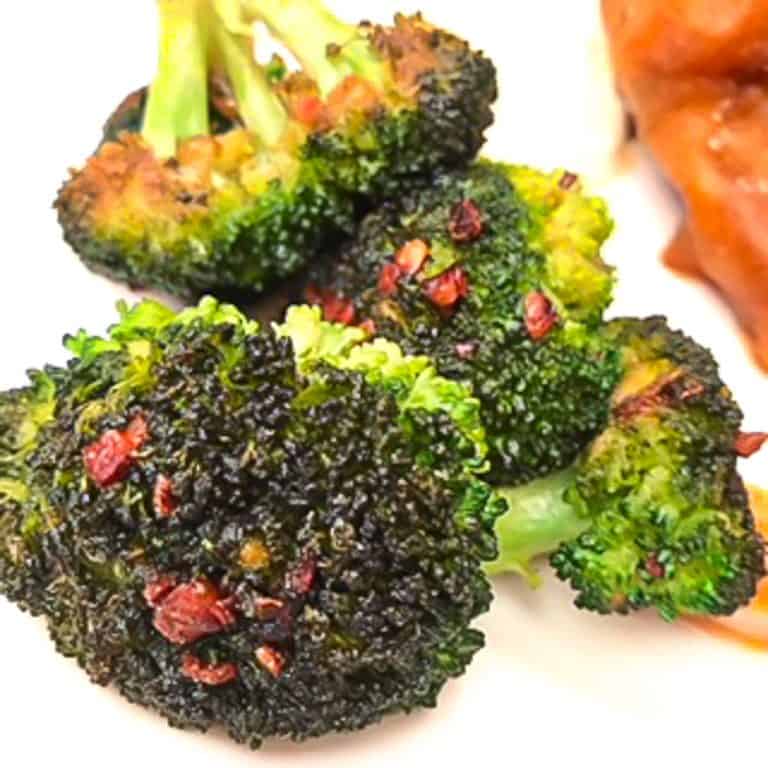How to Prevent Cauliflower from Turning Brown
If you’ve ever prepared a crudité platter, you’ll understand how important it is to prevent cauliflower from turning brown!
You want fresh, crisp vegetables on your platter and here are four ways you can prevent the discoloration of cauliflower.
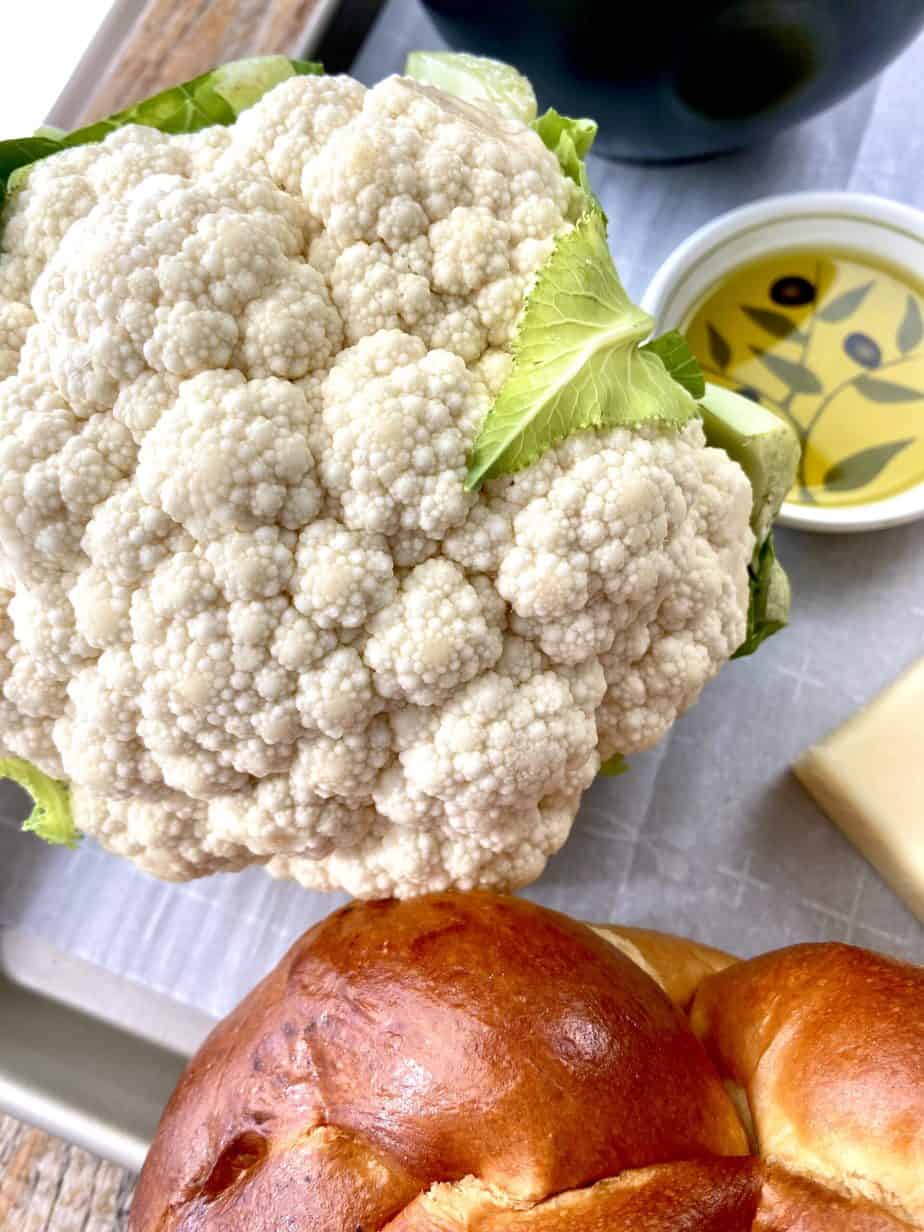
Have you ever cooked a beautiful head of cauliflower, only to have it turn a yucky shade of yellow or brown?
Here you’ll learn why it turns brown and how to prevent it!
Why does cauliflower discolor?
All plants, fruits and vegetables have pigments that give them their vibrant colors and these pigments change for various reasons.
Cauliflower is a flavanoid of the anthoxanthin group, which is a group of “white” pigmented foods–potatoes, onions, cauliflower and pears.
In acidic environments, these foods are white; at a neutral pH they’re creamy white; in alkaline environments they are yellow.
Cauliflower turns brown due to exposure to oxygen and lack of acidity during the cooking process.
How do you know when cauliflower is bad?
The number one indicator of bad cauliflower is mold. You’ll notice some of the white florets have little brown spots on them. Now, this doesn’t mean the entire head of cauliflower is bad, this just means that you need to trim off the brown spots. The second indicator of bad cauliflower is smell: if it smells “funny” or rancid, chances are, it’s been exposed to humidity and light, which will both cause cauliflower to go bad quickly.
If you follow these simple steps, you can minimize the risk of your cauliflower turning brown.
4 Tips to prevent cauliflower from turning brown:
Cauliflower, bananas, apples, avocados, potatoes-we’ve all seen these foods turn brown when they’ve been left out too long.
The pigments respond to the environment, and cauliflower turns grayish brown due to several factors:
- pH level of the cooking water
- type of knife used
- type of cookware used
- degree of exposure to oxygen
How to test and change the pH level of water
Test the pH of tap water:
- The easiest way to test the pH level of your tap water is to use litmus paper strips. These can be found at any pool store or ordered online.
- Just dip the strip into the water; wait a few minutes, then compare the color on the paper to the chart on the bottle.
- How to change the pH of tap water:
- The pH (potential of Hydrogen) is a scale from 0 – 14 where 0 is highly acidic and 14 is highly alkaline.
- Most tap and bottled drinking waters are around 6.5 – 8.0 on the pH scale. As you can see, neither of these is highly acidic, nor are they high in alkalinity.
- Cauliflower has a natural pH balance around 6.5 – 6.8.
- But in order to keep cauliflower white, the acidity of the water needs to be around 5.5-7.5 on the pH scale.
- To increase acidity, add lemon juice or vinegar to the water-neither will impact the flavor of the cauliflower.
- To increase alkalinity, add a little baking soda to the cooking water.
Type of knife used to cut cauliflower
Another measure to ensure white cauliflower is to use a stainless steel knife.
Most knives on the market are stainless steel, but it’s worth mentioning here because aluminum, tin, copper, iron and steel (not stainless steel) are reactive metals that interact with the pH of cauliflower and contribute to its yellowing or browning.
Type of cookware
Cook cauliflower in any non-aluminum pan made of stainless steel, copper or cast-iron-these are ideal for steaming, sautéeing or searing cauliflower.
Avoid pans that have a “non-stick” coating as the “coating” often affects the flavor and color of the vegetable.
Reduce exposure to oxygen
- Fruits and vegetables often discolor when exposed to oxygen.
- The oxidation process naturally turns bananas and avocados brown, as well as cauliflower!
- The best way to reduce exposure to oxygen is to keep it covered and sealed until ready to cook.
How to store cauliflower so it won’t turn brown
If you buy a head of cauliflower in advance, store it in the vegetable bin loosely wrapped.
Place a dry paper towel in the wrapper to absorb any moisture and loosen the wrapper to allow the sulphurous gases to escape.

How to store cauliflower florets
- If you cut the florets off the cauliflower head, first pat them with a paper towel to dry.
- Then, place a dry paper towel in the plastic bag and place them in a loosely tied plastic bag.
- This will keep the light and air away from them, helping to prevent the cauliflower from turning brown.
- The dry paper towel absorbs any moisture and help prevents molding.
- You can safely store whole or cut cauliflower up to 3 days in a refrigerator that is 42ºF.

How to cook cauliflower
Cruciferous vegetables such as cauliflower, broccoli and Brussels sprouts can be cooked in a variety of ways.
Our Grandmothers used to “boil-the-dickens” out of vegetables till they were almost too tender.
Unfortunately, over-boiling removes a majority of the vitamins and nutrients these vegetables offer and the vegetable gets mushy.
Nowdays, nutritionist recommend steaming, quick-sauteeing or roasting vegetables in order to retain their nutritional value, crisp texture and prevent it from turning brown during the cooking process.
Steaming Method
- Sprinkle lemon or vinegar over cauliflower head
- Bring a large pot of water to boil; add lemon or vinegar
- Place steamer basket in water
- Cook uncovered for 3-minutes then place a lid ajar over the cooking pot (this allows gases to escape and minimizes exposure to oxygen); cook 15-20 minutes, or until it’s fork tender
- Remove cauliflower head and allow to drain
- Slice florets off using a stainless steel knife and serve

Quick-Sauté Method
- Cut florets away from cauliflower head; cover with dish towel to keep it from turning brown
- On medium-high heat, add 1-2 tablespoons of olive oil in a large sautee pan
- Put florets in pan flat-side down; cook for 2-minutes uncovered then place lid on pan
- Cook covered for 5 minutes
- Remove lid and continue to cook for 10-12 minutes, stirring occasionally
- Remove cauliflower florets from pan and drain on paper towel
- Season and serve
Roasting Method
- Preheat oven to 400ºF
- Lightly oil baking sheet
- Place baking sheet in oven on middle rack for 8-minutes
- Cut florets off cauliflower and place in large bowl; drizzle olive oil over cauliflower; toss until coated; lightly season with salt and pepper
- Remove hot baking sheet from oven
- Place florets in a single layer onto sheet, flat-side down
- Return baking sheet to oven
- Roast cauliflower 20-25 minutes or until fork-tender
Tips for serving cooked and raw cauliflower
If you plan to serve raw cauliflower immediately, you’ll want to “blanch” it first.
How to blanch cauliflower
- Boil it for 3-minutes in acidic water (2-3 tablespoons of lemon juice or vinegar) then immediately submerge it in ice cold water for 2-minutes.
- If you plan to serve raw cauliflower at a later date, loosely wrap blanched cauliflower head in plastic wrap with a paper towel, and store in the vegetable bin of the refrigerator.
- Do not slice it until ready to serve-this will help to prevent discoloration.
- If you steam a whole head of cauliflower, add a little lemon or vinegar (2-3 tablespoons) to the water and keep the entire head intact. This allows the internal parts of the cauliflower to cook till tender and remain a vibrant white color.
How to cook previously blanched cauliflower
If you’ve prepped (blanched) and stored cauliflower, but want to serve it hot, use either the saute method or roasting method.
You can steam previously blanched cauliflower, but I’ve found it turns out mushy.
FAQ’s
A whole head of cauliflower is done after it has steamed for about 15-20 minutes. The florets should be semi-tender when pierced with a fork. Florets cook much faster than a whole head because there’s more surface volume-florets are usually done in 3-6 minutes.
Choose the brightest, whitest, firmest head. Look closely for brown spots – try to avoid buying a head of cauliflower that has a lot of brown or mold on it. If you find one with a little brown on it, you can cut that off and the vegetable is still safe to eat.
Choose from the back of the bin – remember, this cruciferous vegetable doesn’t like to be stored under light or in open air; by selecting cauliflower from the back of the bin, you minimize exposure to light and oxygen
Fresh, raw cauliflower is odorless, but it does have a sulphurous odor when initially boiling or steaming. If you have a head of cauliflower in your refrigerator that has an odor, chances are it’s bad and you should throw it out.
A few signs indicate the cauliflower is bad: extreme mold, a slick or slimy texture, a yellow-brown hue to the color of the florets are indications that the cauliflower is not fresh.
Serving Suggestions
There are many ways to serve this delicious vegetable. Serve “raw” or lightly blanched florets on vegetable platter, add a little to your favorite salad or pulse in a food processor and add to your favorite pizza topping!
Related topics:
- How to make Perfect Scrambled Eggs Every Time!
- How to Keep Green Vegetables Green
- How to Season and Cook Purple Hull Peas
- How to Prevent Eggplant from Turning Brown
- How to Season and Cook Southern Greens

Equipment
- Large stockpot
- Steam basket (optional)
- Tongs (optional)
Ingredients
- 1 head cauliflower , cut in quarters
- ½ cup lemon juice , fresh; add to water
- ½ cup lemon juice , fresh; squeeze over cut cauliflower
- ½ teaspoon salt , kosher
Cheese Sauce (this makes 2 cups of sauce)
- 4 tablespoons butter , salted or unsalted
- ¼ cup flour , all-purpose
- 1 cup milk , 2% or whole
- 8 ounces cheddar cheese , shredded
- 1 teaspoon vinegar , white
- salt and pepper to taste
Instructions
- Bring 2 quarts of water to hard boil; add ½ cup fresh lemon juice and ½ teaspoon salt to water½ cup lemon juice, ½ teaspoon salt
- Remove stem and leaves from cauliflower; rinse; pat dry thoroughly; keep cauliflower covered
- Use a stainless steel knife and cut head into quarters1 head cauliflower
- Pour remaining ½ cup of lemon juice into large bowl; toss cauliflower quarters until coated well; cover with dish towel until ready to cook½ cup lemon juice
- Place quartered parts into boiling water; cook uncovered for 3-minutes
- Place lid over pot (ajar or tilted, allowing some steam to escape); cook covered 15-20 minutes until it's fork tender; use tongs to remove from water; drain and serve with sauce
Cheese Sauce
- While the cauliflower is cooking, make the sauce: melt butter in saucepan on low heat4 tablespoons butter
- Whisk in flour and combine¼ cup flour
- Add milk in ½ cup increments, continuing to whisk and cook1 cup milk
- Add shredded cheese in increments (handfuls); continue to stir and cook8 ounces cheddar cheese
- Once cheese is thoroughly melted, remove from heat; add vinegar; season to taste and drizzle over cauliflower1 teaspoon vinegar, salt and pepper to taste
Notes
- You can use a steam basket or submerge vegetable in water, either way
- Steaming may take a few minutes longer
- The sauce recipe yields 2 cups of cheese sauce

